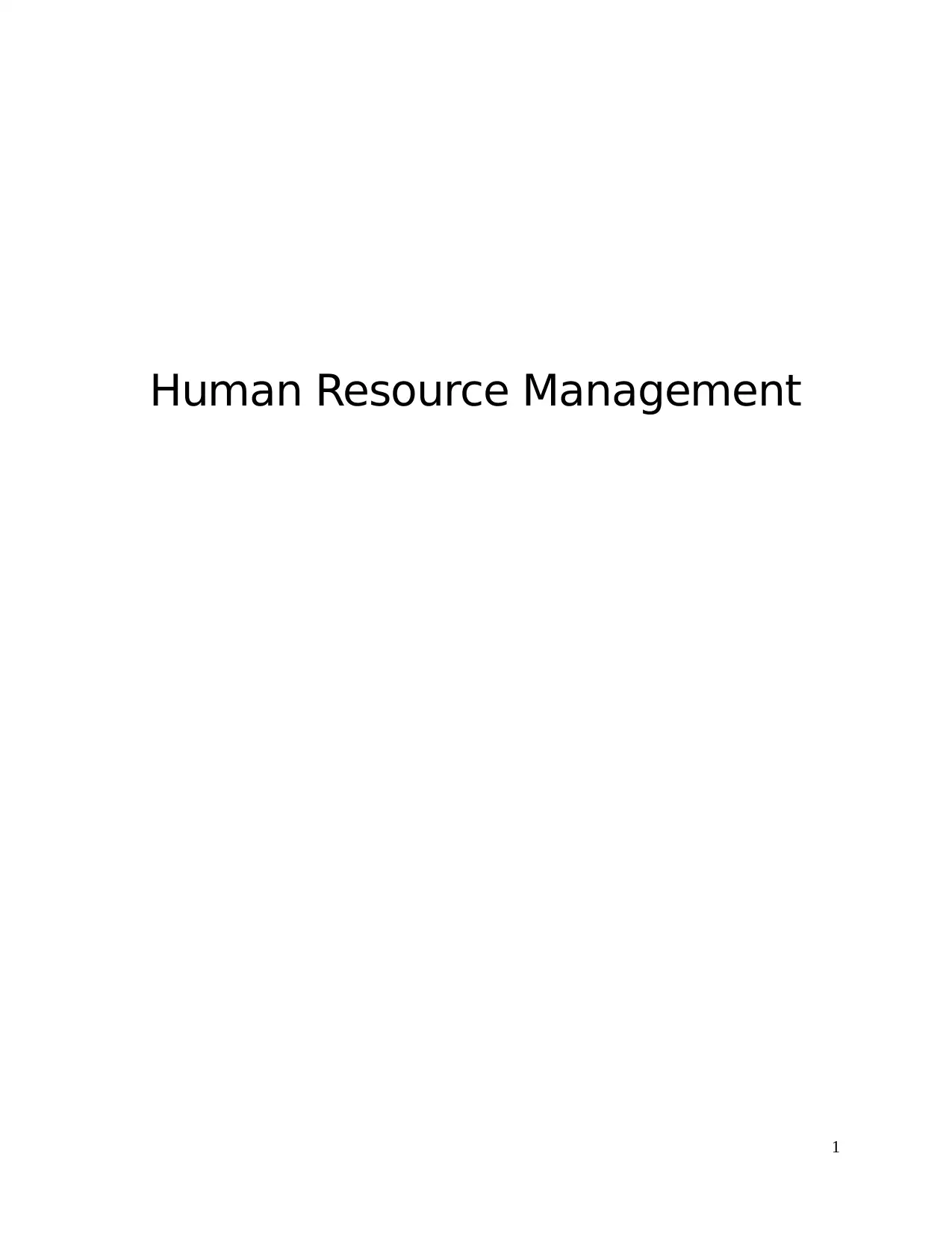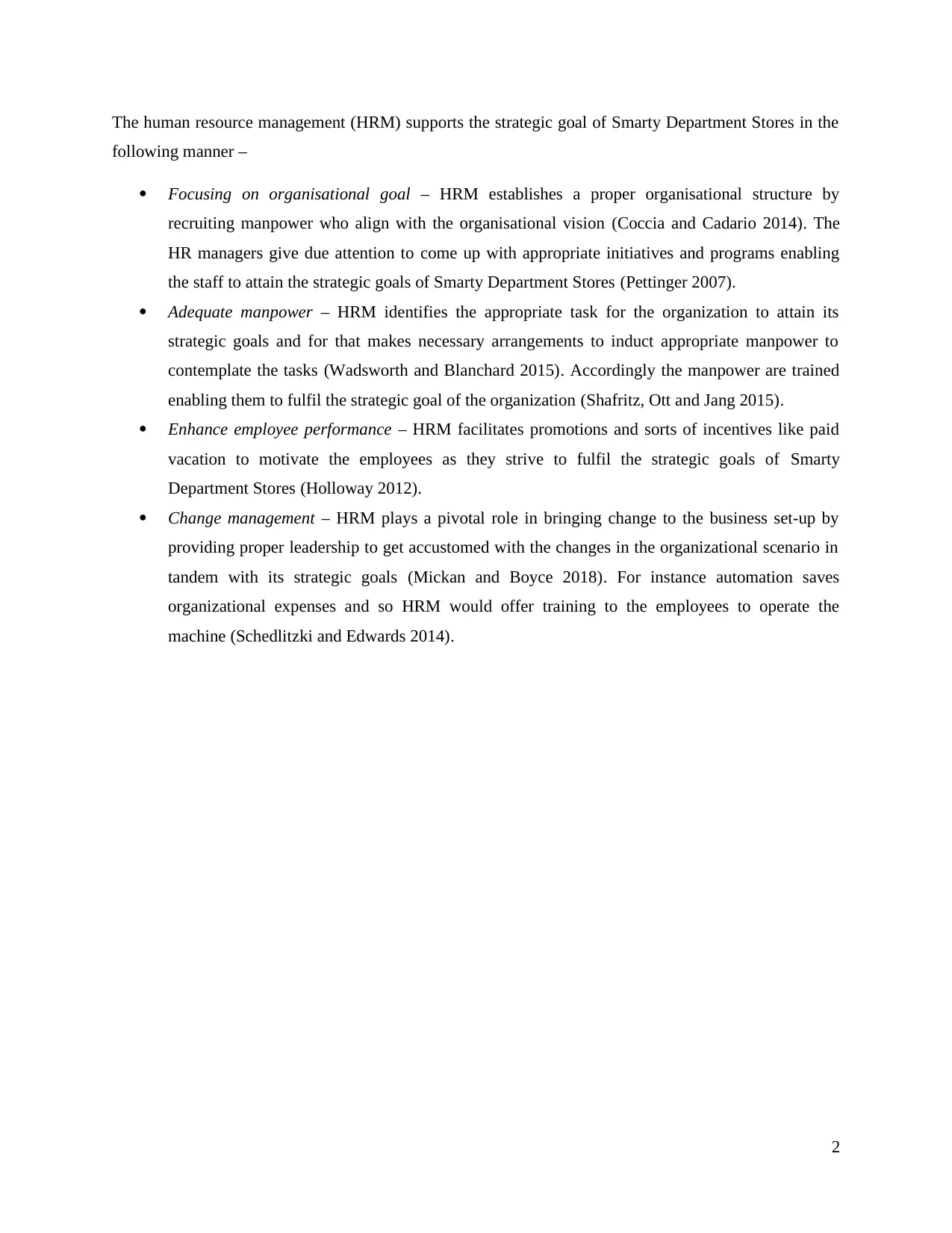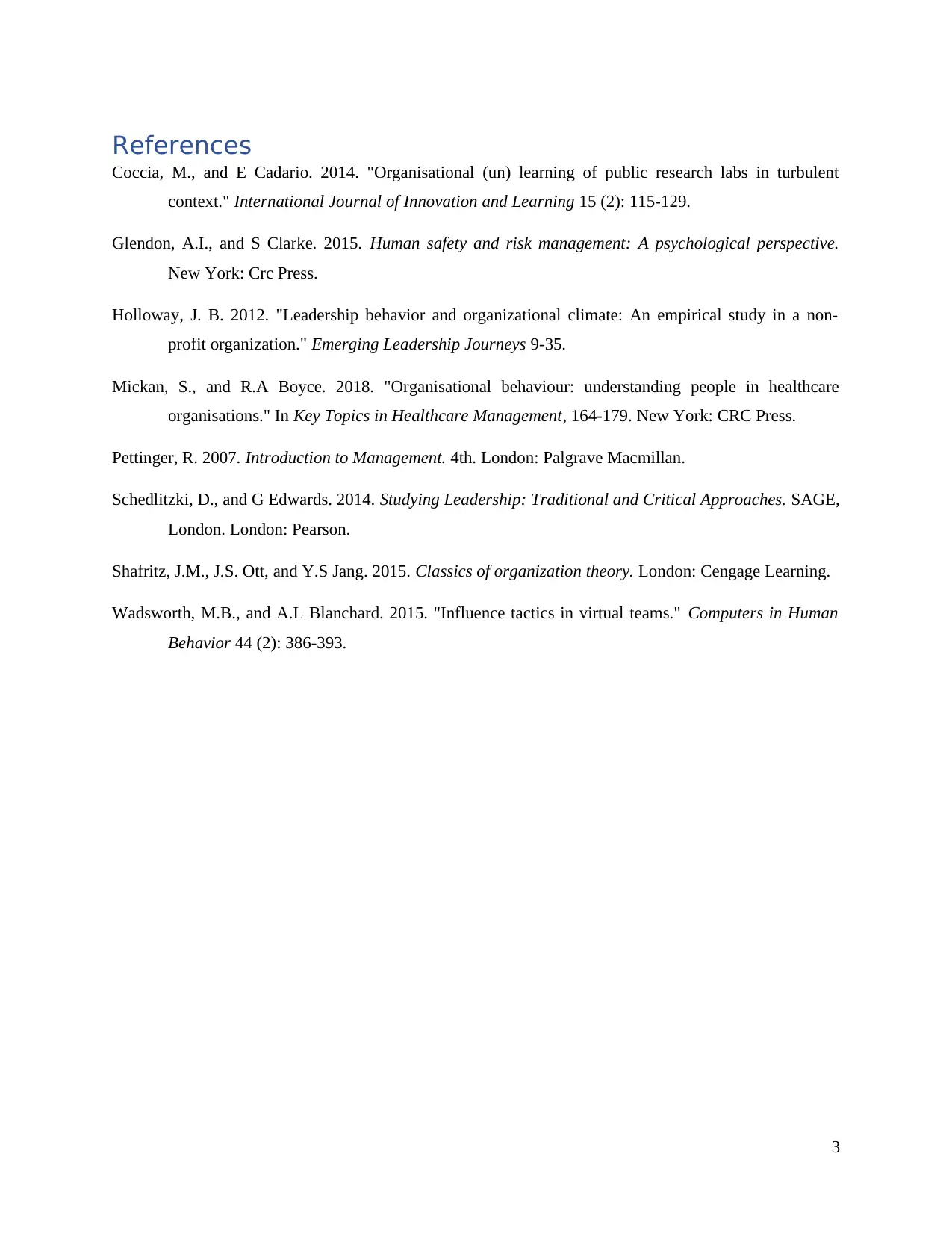HRM's Strategic Support: A Summary for Smarty Department Stores' CEO
VerifiedAdded on 2023/01/10
|3
|477
|71
Report
AI Summary
This report provides a concise overview of how Human Resource Management (HRM) supports the strategic goals of Smarty Department Stores, addressing a scenario where a Smarty's HR team member needs to persuade the CEO. HRM supports strategic goals by establishing an organizational structure aligned with the company's vision (Coccia & Cadario, 2014). It ensures adequate manpower through appropriate recruitment and training (Wadsworth & Blanchard, 2015; Shafritz, Ott & Jang, 2015). HRM enhances employee performance through incentives and promotions (Holloway, 2012). It also facilitates change management by providing leadership during organizational changes, such as automation (Mickan & Boyce, 2018; Schedlitzki & Edwards, 2014). This summary directly addresses the CEO's question, focusing on key points to demonstrate the crucial role of HRM in achieving organizational success. The report is based on contemporary, peer-reviewed HRM and SHRM academic literature, and it cites relevant academic articles (Chicago style) to support its arguments. The main argument is that HRM is essential for Smarty Department Stores' strategic success by aligning manpower with goals, enhancing performance, and managing change.
1 out of 3




![[object Object]](/_next/static/media/star-bottom.7253800d.svg)